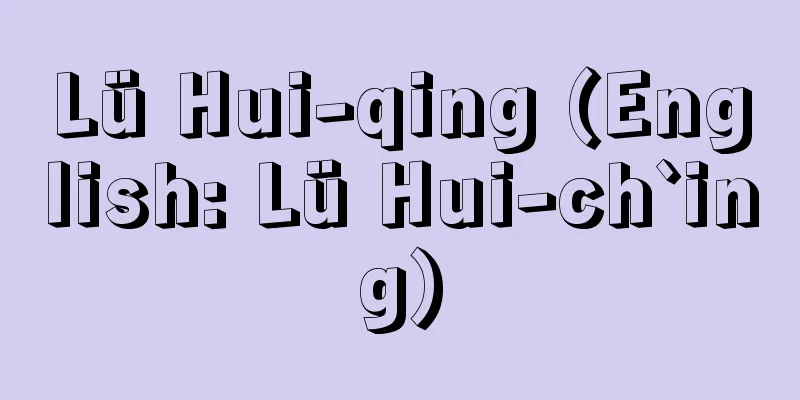Hatsuuma - Hatsuuma

|
It refers to the first day of the horse month in February. It is considered a festival day for Inari, and Inari-ko events are held, but the customs are not necessarily related to Inari and vary from place to place. On this day, it is common for children to make Hatsuuma dumplings and gather together to beat drums. In Nagano Prefecture, the Hatsuuma day is a festival to offer rice cakes to the Doro (ancestral) god for those who lost their huts during the Dondo-yaki festival on Little New Year, as a sympathy for the fire. Some places also hold a festival called Kodamama Matsuri to worship the god of silkworms. In Nogami Village, formerly Aso County, Tochigi Prefecture (now Sano City), on Hatsuuma, they make Shimizukari, a rice porridge made from radish and salmon, and offer it to the altar. It is said that if the Hatsuuma day falls too early, there are many fires, and if it falls at the beginning of the month, it is postponed to the second day of the horse, or it is said that it is fine if it is after the fifth day. In the Tsugaru region of Aomori Prefecture, people put water buckets on the roof or sprinkle water on it. In Takayama City, Gifu Prefecture, it is said that people do not drink tea on the Hatsuuma day, and in the southeastern part of Tottori Prefecture (the area centered around Yazu District), they wash and dry tea kettles. Another unusual custom is that in the Muikamachi area of Minamiuonuma City, Niigata Prefecture, where many households worship their yashikigami (house gods), on Hatsuuma they offer rice with red beans and herring as offerings in prayer for a good year. In Hino District, Tottori Prefecture, rice flour is offered to the altar, called Hatsuuma-kon. In the Utano district of Uda City, Nara Prefecture, a 25-year-old man and a 19-year-old woman visit a nearby shrine or temple on Hatsuuma Day because they are in an unlucky year. On Iki Island in Nagasaki Prefecture, they hold a festival called Sejo Matsuri, where they pray for a good harvest on Hatsuuma Day. Markets are held throughout Kumamoto Prefecture, selling products such as boiled tofu and inari sushi. In light of these customs, it can be said that Hatsuuma Day was a festival meant to pre-celebrate a good harvest for the year. [Oto Tokihiko] [Reference items] | | | | |An event held on the first day of the horse month in February, where people visit the Inari Shrine for a festival. It is also called Hatsuuma Mairi. Customs vary by region, but the Hatsuuma festival can be said to have been a festival to celebrate a good harvest that year. Yoshu Shuen's "Manners of the Edo Period: February - Hatsuuma Inari Festival Illustration" 1890 (Meiji 23), owned by the National Diet Library . Hatsuuma Shrine Visit Source: Shogakukan Encyclopedia Nipponica About Encyclopedia Nipponica Information | Legend |
|
2月初めの午(うま)の日をいう。稲荷(いなり)の祭日とされ、稲荷講の行事が行われるが、その習俗はかならずしも稲荷とは関係なく、土地によりさまざまである。この日初午団子をつくり、子供たちが集まって太鼓をたたくことが広く行われる。長野県では初午の日を道陸(どうろく)(祖)神の火事見舞いといって、小正月(こしょうがつ)のどんど焼に小屋を焼かれた見舞いとして餅(もち)を搗(つ)いてこの神に供える祭りとしている。また蚕玉祭(こだままつり)といってカイコの神を祀(まつ)っている所もある。栃木県の旧安蘇(あそ)郡野上村(現佐野市)では、初午にシミズカリといって大根や鮭(さけ)のおじやをつくり神前に供える。初午の日が早いと火事が多いといわれ、月の初めにあたると二の午の日に延期する例があり、5日過ぎればよいともいう。青森県の津軽地方では、屋根に水桶(みずおけ)をあげたり水をまいたりしている。岐阜県の高山市では初午の日には茶を飲まないといい、鳥取県南東部(八頭(やず)郡を中心とした地域)では茶釜(ちゃがま)を洗って乾かすという。 ほかに、変わった風習として、新潟県南魚沼(みなみうおぬま)市の六日町地区では、多くの家が屋敷神を祀っているが、初午には豊年を祈願して小豆飯(あずきめし)と鰊(にしん)を供える。鳥取県日野郡では初午粉といって、米の粉を神前に供える。奈良県宇陀(うだ)市菟田野(うたの)区では初午の日に、25歳の男と19歳の女が、厄年のため近所の社寺にお参りする。長崎県壱岐(いき)島では、世上祭(せじょうまつり)といって初午に豊作を祈る。熊本県の各地では初午の市(いち)が立ち、湯豆腐、いなりずしなどを売り出している。これらの習俗からみて、初午の日とは、その年の豊作を予祝する意味の祭りであったといえる。 [大藤時彦] [参照項目] | | | | |2月最初の午の日、稲荷神社の祭礼に参詣する行事。初午参りともいう。習俗は地域によりさまざまだが、初午はその年の豊作を予祝する意味の祭りであったといえる。楊洲周延画『江戸風俗十二ヶ月之内 二月 初午稲荷祭之図』 1890年(明治23)国立国会図書館所蔵"> 初午詣で 出典 小学館 日本大百科全書(ニッポニカ)日本大百科全書(ニッポニカ)について 情報 | 凡例 |
<<: Smoke generator - Hatsuenzai
Recommend
Disc - Enban (English spelling) disc
It is also called a disk. Strictly speaking, a cir...
Cabin Cruiser
… A cruiser is generally a boat with sleeping fac...
Circular orchid - Circular orchid
…A biennial plant of the Brassicaceae family. It ...
subsonic filter
...A component stereo assembled by a manufacturer...
Leopold III
1901‐83 The fourth King of Belgium. Reigned 1934-5...
Yuan Shao
One of the heroes of the late Eastern Han Dynasty...
tarragon
…It is often used in French dishes that use escar...
Aga Ikki - Agaiikki
This uprising was centered around the Ikko sect Ho...
Kisaku Ito
Set designer. Born in Kanda, Tokyo. Graduated fro...
Light soy sauce - Light soy sauce
...It is a representative Japanese soy sauce char...
Ecological pyramid - ecological pyramid
When comparing the population densities of species...
Kyushu Trans-Kyushu Expressway - Kyushu Trans-Kyushu Expressway
An expressway that crosses the center of Kyushu f...
Backstage - Backstage
…The background to this idea is that caves were r...
On Kawara
Born January 2, 1933 in Kariya, Aichi [Died] July ...
Ligament of Treitz
…It is named after the length of the human rectum...









